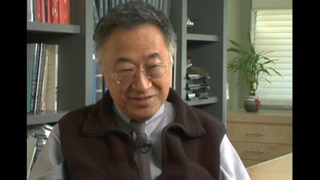Interviews
His mother’s experience of the camp
She’s an American citizen. Educated in Japan. She was dying of cancer and I asked her you know, because, “shikataganai” you don’t, just don’t, don’t talk about it. She wanted us to be good Americans and we all came out good Americans.
She didn’t want us to be bitter and we weren’t bitter. But I think we are. Our family is a little bit nuts, I think. We’re all—no I really mean that. We’re not like maybe it’s the San Bernardino isolation. I don’t know if you grew up in Japanese communities but we didn’t have no Japanese communities. It was us. That family. Those three families.
Anyways, my mother was dying of cancer and she, she finally opened up and said, “You know, I hated that place. I hated every single day.” And she was mad. But I’ve never seen her do that until she was dying.
Date: September 8, 2011
Location: California, US
Interviewer: John Esaki, Kris Kuramitsu
Contributed by: Watase Media Arts Center, Japanese American National Museum









